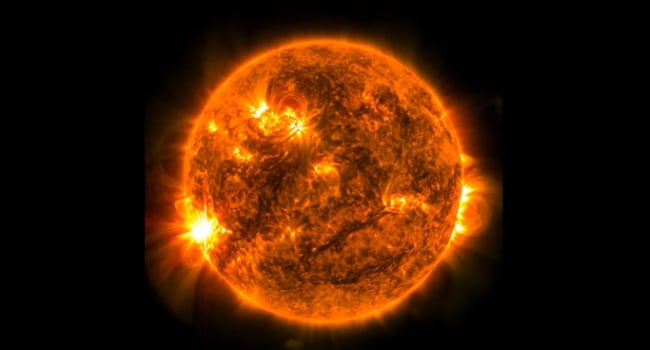
Powerful flare occurs in active part of Sun: What effect did it have on earth?
In the active solar region responsible for May's record-breaking auroras, a powerful M9.3 flare occurred on June 23, causing moderate shortwave radio outages in some regions.
This area, formerly known as AR3697 and AR3664, has already shown high activity, causing a G5 geomagnetic storm and bright auroras around the world.
A G5 is the strongest geomagnetic storm on a scale of five that occurs infrequently, typically once every ten years, and can cause significant disruption to power grids, communications systems and satellite navigation systems.
The Sun's rotation period is about 27 days, so this active region will be visible from Earth for about two weeks before it disappears behind the Sun's western edge.
Although this active sunspot has shrunk in size, it continues to produce powerful flares. The June 23 flare peaked at 13:01 (GMT) and was close to being classified as a Class X flare, the most powerful.
Physicist Keith Strong said: "A new sunspot region in the southeast rim has just produced an M9.7 flare (just 3% fainter than an X flare)."
The burst caused moderate shortwave radio outages in Western Europe and Africa. This is a common occurrence after powerful solar flares, as they emit strong pulses of X-rays and extremely strong UV radiation.
This radiation ionizes the upper layers of the Earth's atmosphere, creating an environment where high-frequency shortwave radio signals cannot propagate effectively. Radio waves interacting with electrons in ionized layers lose energy and can be absorbed or attenuated.
Earlier in this active region of the Sun, when it was codenamed AR3697, there was an X-class flare that caused communications outages in Western Europe and the Eastern United States.
- Related News
- NASA releases video simulation of flight to Pillars of Creation
- Samples taken from Moon՛s far side for first time have been removed from capsule and sent for study
- NASA assigned SpaceX the task of landing ISS from space and will pay $843 million for it
- China makes a historic breakthrough: Chang'e-6 probe delivers soil samples from the far side of the Moon
- NASA admits it cannot protect the Earth from asteroid collision
- Debris of Chinese rocket fell near the settlement (video)
- Most read
month
week
day
- NASA admits it cannot protect the Earth from asteroid collision 1559
- Jelly Max: World's smallest 5G phone 960
- China makes a historic breakthrough: Chang'e-6 probe delivers soil samples from the far side of the Moon 890
- OnePlus Pad Pro: World's first Snapdragon 8 Gen 3 tablet costs just $400 849
- Samsung has overtaken Apple in US smartphone sales 784
- Apple to replace half of iPhone assembly line workers with robots 764
- How and why is artificial intelligence worsening climate on Earth? 752
- YouTube adds several new features at once 734
- Insider publishes photos of Galaxy Watch 7, Watch Ultra, Buds 3 and Buds 3 Pro 2 weeks before presentation 719
- Why won't older iPhones and Vision Pro get AB support? Apple's clarification 704
- Archive
